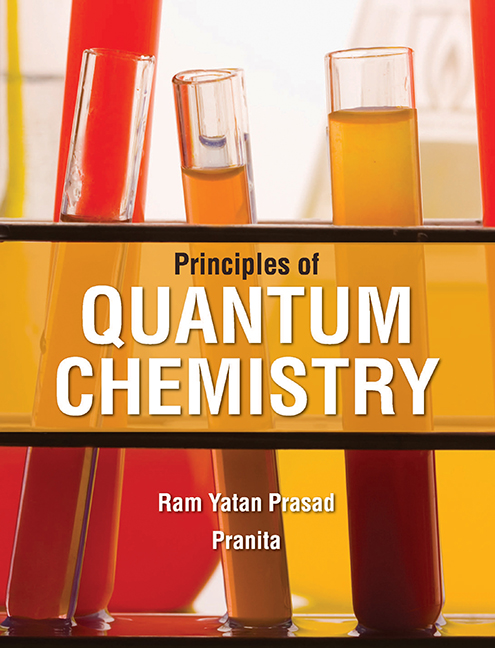Book contents
- Frontmatter
- Dedication
- Contents
- List of Figures
- List of Tables
- Foreword
- Preface
- 1 Quantum Theory
- 2 Wave–Particle Duality
- 3 Mathematical Techniques
- 4 Quantum Mechanical Operators
- 5 Postulates of Quantum Mechanics
- 6 The Schrödinger Equation
- 7 Playing with the Schrödinger Equation
- 8 Hydrogen Atom
- 9 Approximate Methods
- 10 Diatomic Molecules
- 11 Multi-electronic Systems
- 12 Polyatomic Molecules
- 13 Hückel Molecular Orbital Theory/Method
- 14 Density Functional Theory
- Glossary
- Appendix I
- Appendix II
- Appendix III
- Model Question Papers
- Index
7 - Playing with the Schrödinger Equation
Published online by Cambridge University Press: 02 December 2022
- Frontmatter
- Dedication
- Contents
- List of Figures
- List of Tables
- Foreword
- Preface
- 1 Quantum Theory
- 2 Wave–Particle Duality
- 3 Mathematical Techniques
- 4 Quantum Mechanical Operators
- 5 Postulates of Quantum Mechanics
- 6 The Schrödinger Equation
- 7 Playing with the Schrödinger Equation
- 8 Hydrogen Atom
- 9 Approximate Methods
- 10 Diatomic Molecules
- 11 Multi-electronic Systems
- 12 Polyatomic Molecules
- 13 Hückel Molecular Orbital Theory/Method
- 14 Density Functional Theory
- Glossary
- Appendix I
- Appendix II
- Appendix III
- Model Question Papers
- Index
Summary
We have become acquainted with the Schrödinger equation. Now we shall apply the Schrödinger equation in hypothetical problems. This essentially means that this equation will be applied to different simple systems. It is known that the electrons in atoms and molecules can execute three motions, namely, translational motion, vibrational motion and rotational motion. But when the particle-like electron remains free or is under quantum mechanical constraints, it moves only linearly, i.e., in one direction. The example of such a system is the free particle in a box. In case of harmonic oscillator, the particle executes only vibrational motion, but the particle executes rotational motion only in case of rigid rotor or rotator.
Particle in a one-dimensional box
Let us consider a particle of mass m, which is constrained or restricted to motion in a one-dimensional potential box of length a. The particle is moving in a constant potential.
The potential (V) may be taken to be zero between x = 0 and x = a, i.e., inside the box, because its sole effect is to increase the energy by a constant amount, and outside the range x = 0 and x = a, the potential is infinity.
This situation is obtained by plotting a graph of potential energy (V) against distance x. It has been illustrated in Fig. 7.1.
We shall apply the Schrödinger equation in one dimension to the free particle in the box. The Schrödinger equation in one dimension (along the x-axis, say) may be expressed as
where, ψ = wave function
E = energy along x axis
V = potential energy of the particle
For a free particle, potential energy V = 0, Therefore, the Schrödinger equation takes the form
This is a second-order differential equation, whose general solution will be
ψ = A sin kx+ B cos kx (7.3)
where, A and B are arbitrary constants. Applying the boundary condition of the problem,i.e., when
x = 0, ψ = 0
and when x = a, ψ = 0 to Eq. (7.3), we may get an Eigen function of the system.
When x = 0, ψ = 0, putting these values in Eq. (7.3), we obtain
- Type
- Chapter
- Information
- Principles of Quantum Chemistry , pp. 195 - 271Publisher: Foundation BooksPrint publication year: 2014



